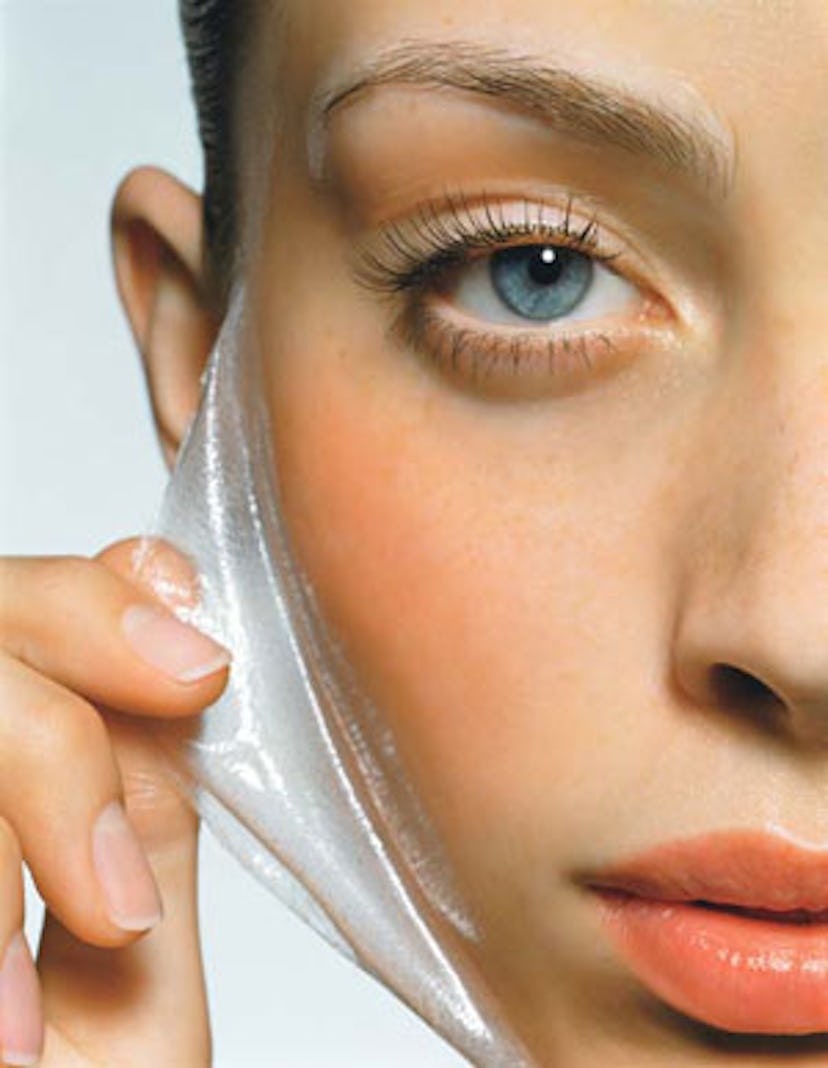Face Off
Instead of the standard steam-and-cream facial, a high-octane version—using surgical blades, intense acids and medical precision—could be part of your next visit to the doctor.

Relaxation rooms, fuzzy slippers and thimble-size cups of herbal tea may do wonders for the psyche, but let’s be honest—their effect on skin is negligible. While there’s no denying the appeal of a spa, these days the best facials may be taking place inside the somewhat cold and clinical offices of dermatologists and plastic surgeons. Many medical aestheticians and skincare specialists (their preferred terms) are happily eschewing plush robes and the lulling rhythms of Enya for a chance to simply get down to business. “We don’t do cream over cream,” says Luzinete Ripardo, a cherub-faced Brazilian who sees clients at Sadick Dermatology on New York’s Park Avenue. Bonnie Ndoci, who works out of Dennis Gross’s booming Manhattan practice, states, “The whole hour is treatment.”
Unlike medi-spas, which often have little else than a consulting physician’s name on the door to differentiate them from a run-of-the-mill spa, doctor’s offices are where genuinely effective tools—surgical blades, aggressive peels, needles—take center stage. They’re also where you’ll get the benefit of both medical guidance and well-honed technique. “If you want something that’s truly corrective and makes a long-term difference, you go to the doctor’s office,” says Susan Wells, president of the Society of Plastic Surgical Skin Care Specialists. “A good, effective facial completely removes the top, dead layer of the epidermis so healthier skin is exposed and at-home products are able to actually penetrate,” says Adam Kolker, a New York plastic surgeon who employs a full-time aesthetician. “We have a deep and comprehensive toolbox to do that.”
While there’s plenty of crossover between traditional facials and the ones administered in a physician’s office (deep cleansing, extractions, microdermabrasion, light peels), medical aestheticians are less likely to be swayed by trendy ingredients or push the product line being sold at the checkout desk. They’re also more likely to borrow from the medicine chest, using strips of gauze to keep a slippery solution in place, or a Botox needle to clear clogged pores. Of the latter technique, Michele Sabino, plastic surgeon Gerald Imber’s in-house facialist, says, “It won’t leave marks the way a lance could.”
Most notably, though, in a doctor’s office, a therapist can employ techniques that aren’t—or at least shouldn’t be—performed in a spa. Dermaplaning, for one, is a form of facial exfoliation that requires surgical steel and a very steady hand. A thin blade is glided over skin, shaving off dead, dry layers plus unwanted peach fuzz. It’s effective for evening out skin tone, as well as lightening the look of fine lines. “It’s not as invasive as it sounds,” says Terri Wojak, a medical aesthetician in Chicago facial plastic surgeon Steven Dayan’s practice, adding that dermaplaning is a great alternative for clients with rosacea or broken capillaries who can’t tolerate the vacuumlike suction of microdermabrasion.
“We all love going to spas, but it’s buyer beware,” says New York dermatologist David J. Goldberg. “One thing you’re guaranteed in a doctor’s office is safety and efficacy.” Although there is no difference in basic training for those who want to work in spas and doctor’s offices (most states mandate a minimum of 600 hours to become a licensed aesthetician), many doctors require their medical aestheticians to undergo additional training.
Dianne Vavra, Dior Beauty’s vice president of public relations, switched from spa facials to the doctor’s office after she was treated for malignant melanoma in 2005. While her dermatologist does a full body check every three months, Vavra visits with Ripardo once a month for a thorough cleaning (including facial extractions so extensive they cover not only the nose and chin but also the inner ears). “Luzi is very aware of changes in my skin,” Vavra says. “A couple of times she’s said to me, ‘I see something that looks a little strange, you should have it checked out.’” Plus the no-frills environment suits her personality. “I don’t enjoy being pampered,” she says. “Just do what needs to be done and let me get on with my day.”
Ben Hassett/Trunkarchive.com